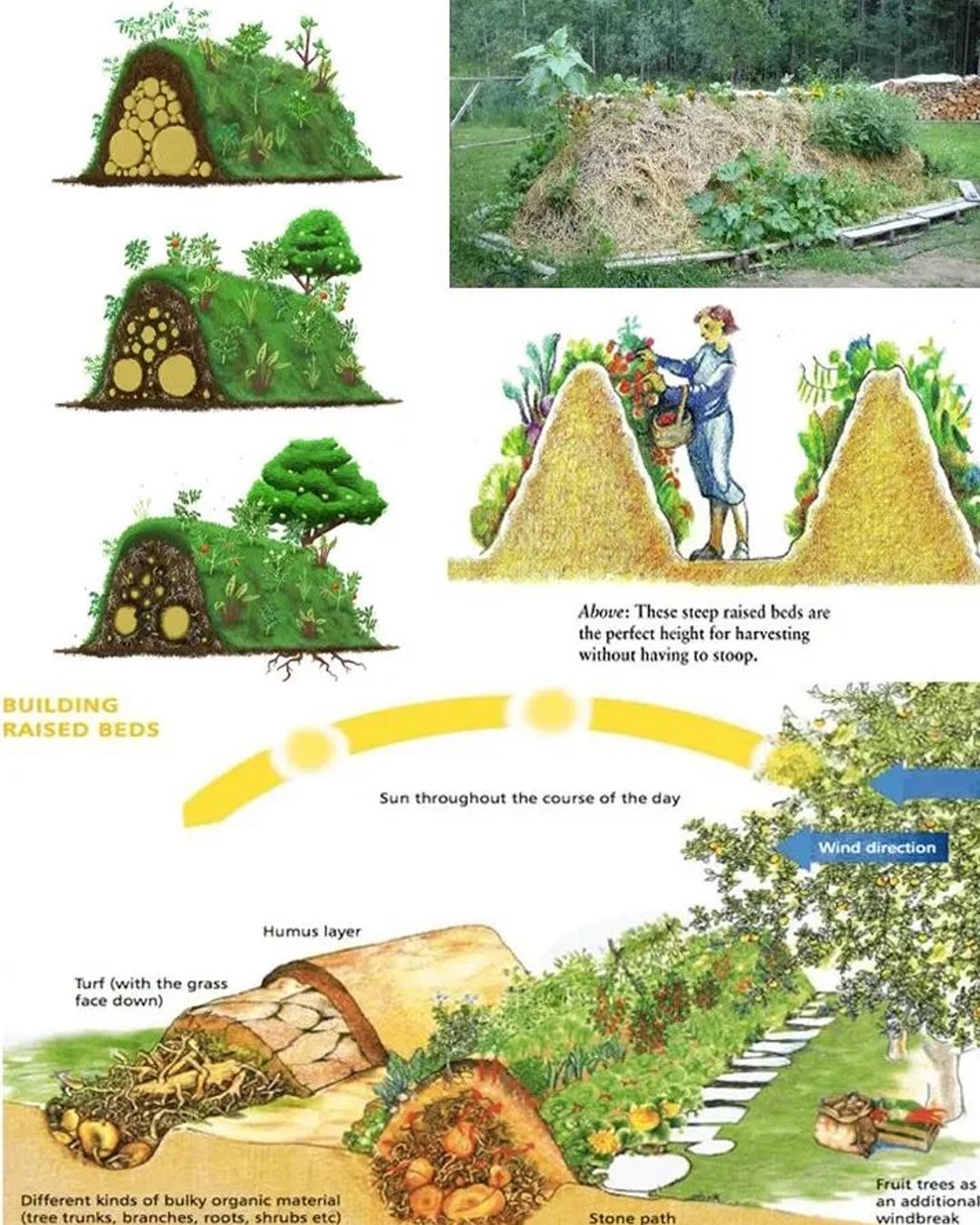In recent years, the concept of sustainable gardening and farming practices has gained significant attention. One such innovative approach is the construction of hugelkultur beds. These raised garden beds not only help in conserving water and reducing the need for irrigation but also improve soil fertility naturally. In this article, we will take you through the step-by-step process of building hugelkultur beds and explore the numerous benefits that come with incorporating them into your garden or farm.
What are Hugelkultur Beds?
Hugelkultur beds, pronounced “hoo-gul-culture,” originated in Eastern Europe and are becoming increasingly popular in the world of permaculture and sustainable gardening. The term “hugelkultur” translates to “hill culture” or “mound culture” in German, and the beds themselves are essentially raised garden beds filled with organic materials.
Step-by-Step Guide to Building Hugelkultur Beds
Choose a Location:
Start by selecting a suitable location for your hugelkultur bed. It should receive adequate sunlight and be accessible for maintenance.
Mark the Bed:
Outline the desired shape and dimensions of your hugelkultur bed using stakes and string. Typical dimensions range from 3 to 5 feet wide and 2 to 4 feet high.
Dig a Trench:
Dig a trench within the marked area, about 1 to 2 feet deep. This trench will serve as the base of your hugelkultur bed.
Add Logs and Branches:
Place logs and branches in the trench, filling it up to about half of its depth. These woody materials act as the foundation of the bed, providing structure and aiding in moisture retention.
Layer Organic Matter:
On top of the logs and branches, layer organic matter such as leaves, straw, kitchen scraps, and compost. This layer should be about a foot deep.
Add Soil:
Cover the organic matter with a layer of soil, about 6 to 12 inches deep. Ensure the soil is rich in nutrients for optimal plant growth.
Plant Your Garden:
Now that your hugelkultur bed is prepared, you can start planting. You can grow a variety of vegetables, herbs, and flowers in these beds. Be mindful of the specific needs of the plants you choose.
Benefits of Hugelkultur Beds
Water Conservation:
Hugelkultur beds retain moisture efficiently due to the decomposing organic matter and the sponge-like effect of the logs and branches. This reduces the need for frequent watering.
Enhanced Soil Fertility:
Over time, as the organic matter breaks down, it releases nutrients into the soil, creating a fertile environment for plant growth. Hugelkultur beds also have a pH-balancing effect.
Reduced Weeding:
The depth of a hugelkultur bed and the continual decomposition of organic matter suppress weed growth, minimizing the need for weeding.
Longevity:
Hugelkultur beds can last for several years, providing a sustainable and productive gardening solution.
Better Drainage:
These beds have excellent drainage, preventing waterlogging during heavy rains.
Climate Resilience:
Hugelkultur beds can help mitigate the effects of climate change by ensuring your garden remains productive even in adverse weather conditions.
Building hugelkultur beds is a rewarding and sustainable gardening practice that offers numerous benefits, including water conservation, improved soil fertility, and reduced maintenance. By following the step-by-step guide outlined in this article, you can create your own hugelkultur beds and contribute to a more environmentally friendly and productive garden or farm. Embrace this ancient technique and witness the positive impact it can have on your gardening experience and the planet.
